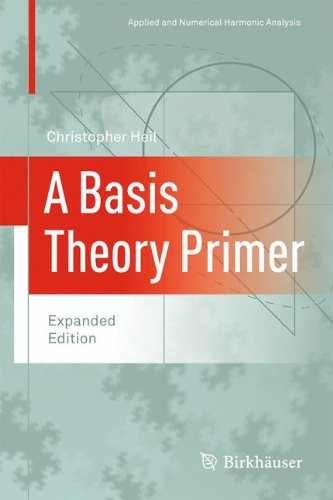

Most ebook files are in PDF format, so you can easily read them using various software such as Foxit Reader or directly on the Google Chrome browser.
Some ebook files are released by publishers in other formats such as .awz, .mobi, .epub, .fb2, etc. You may need to install specific software to read these formats on mobile/PC, such as Calibre.
Please read the tutorial at this link: https://ebookbell.com/faq
We offer FREE conversion to the popular formats you request; however, this may take some time. Therefore, right after payment, please email us, and we will try to provide the service as quickly as possible.
For some exceptional file formats or broken links (if any), please refrain from opening any disputes. Instead, email us first, and we will try to assist within a maximum of 6 hours.
EbookBell Team

4.4
72 reviewsThe classical subject of bases in Banach spaces has taken on a new life in the modern development of applied harmonic analysis. This textbook is a self-contained introduction to the abstract theory of bases and redundant frame expansions and its use in both applied and classical harmonic analysis.
The four parts of the text take the reader from classical functional analysis and basis theory to modern time-frequency and wavelet theory.
* Part I develops the functional analysis that underlies most of the concepts presented in the later parts of the text.
* Part II presents the abstract theory of bases and frames in Banach and Hilbert spaces, including the classical topics of convergence, Schauder bases, biorthogonal systems, and unconditional bases, followed by the more recent topics of Riesz bases and frames in Hilbert spaces.
* Part III relates bases and frames to applied harmonic analysis, including sampling theory, Gabor analysis, and wavelet theory.
* Part IV deals with classical harmonic analysis and Fourier series, emphasizing the role played by bases, which is a different viewpoint from that taken in most discussions of Fourier series.
Key features:
* Self-contained presentation with clear proofs accessible to graduate students, pure and applied mathematicians, and engineers interested in the mathematical underpinnings of applications.
* Extensive exercises complement the text and provide opportunities for learning-by-doing, making the text suitable for graduate-level courses; hints for selected exercises are included at the end of the book.
* A separate solutions manual is available for instructors upon request at: www.birkhauser-science.com/978-0-8176-4686-8/.
* No other text develops the ties between classical basis theory and its modern uses in applied harmonic analysis.
A Basis Theory Primer is suitable for independent study or as the basis for a graduate-level course. Instructors have several options for building a course around the text depending on the level and background of their students.